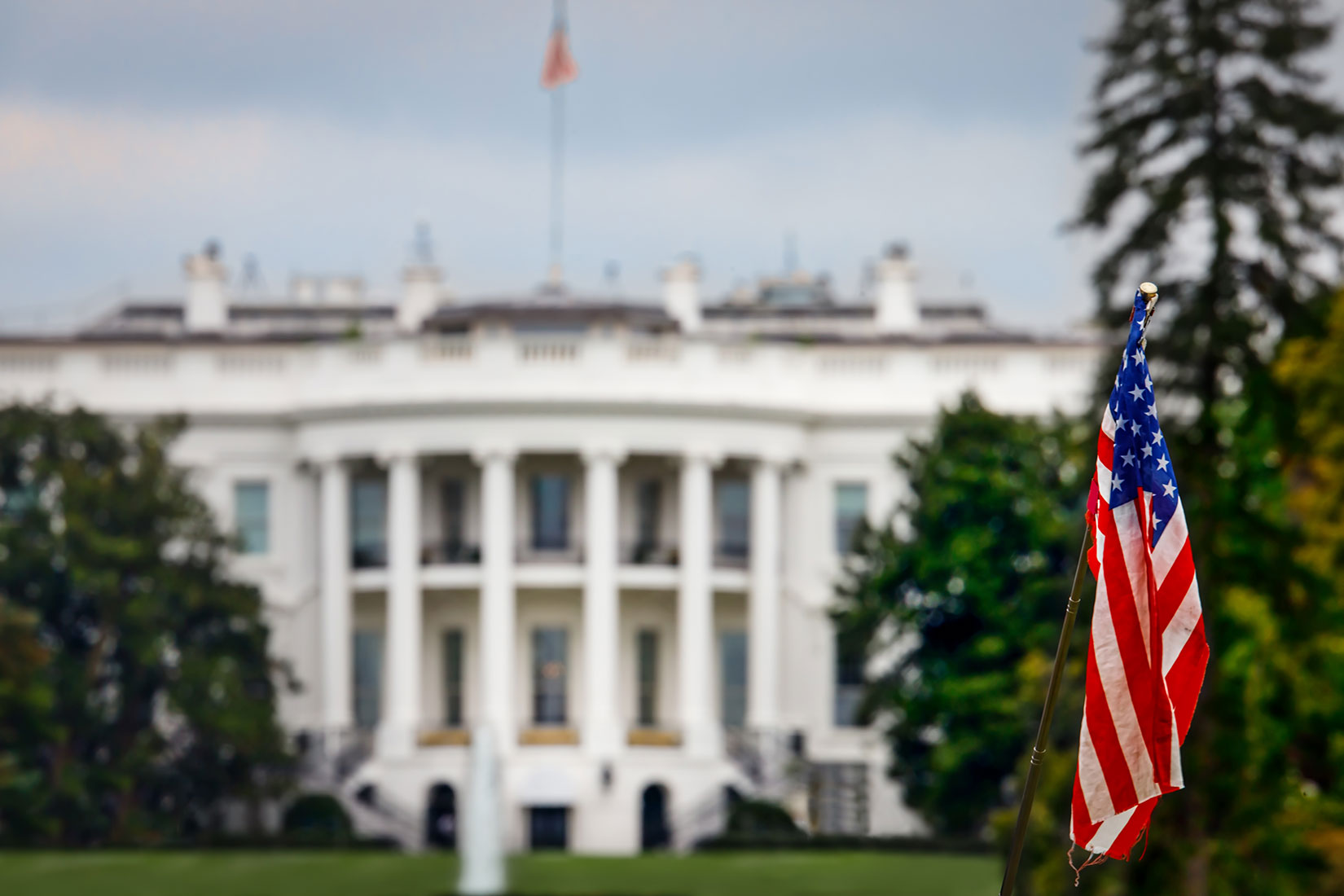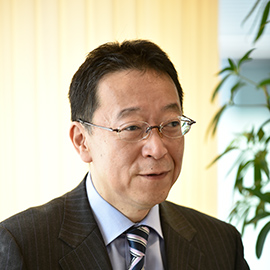The Biden administration chose Japanese Prime Minister Yoshihide Suga for the first face-to-face summit with U.S. President Joe Biden. In the joint statement issued after the April 16 meeting, the two countries expressed shared “concerns over Chinese activities that are inconsistent with the international rules-based order, including the use of economic and other forms of coercion,” their opposition to unilateral attempts to change the status quo in the East China Sea (where the Senkaku Islands are located), and their opposition to China’s illegal claims and activities in the South China Sea. They also stressed “the importance of peace and stability across the Taiwan Strait and [encouraged] the peaceful resolution of cross-Strait issues”[1].
This statement, in which the Japanese and U.S. leaders clearly expressed their opposition to China, may come to be seen as a milestone in the history of international relations. It may mark the start of an era of U.S.-China rivalry, which follows World War II, in which Japan and the U.S. fought over China; the bipolar system of the U.S. and the Soviet Union during the Cold War; the unipolar system of Pax Americana; and the “long wars” in Afghanistan and Iraq that were triggered by the terrorist attacks on September 11, 2001.
While Biden and Suga were meeting, the Biden administration also finalized the timeline for the withdrawal of U.S. troops from Afghanistan. On April 14, two days before the U.S.-Japan summit, Biden formally announced that the drawdown would begin on May 1, and that the 2,500 remaining troops in Afghanistan would be completely withdrawn by September 11 — the 20th anniversary of the terrorist attacks on the U.S.[2]

The Biden administration seems to think that Japan is the most important partner for the U.S. in its long-term competition with China and as it reduces its presence in Afghanistan and the Middle East. Looking objectively at Japan’s geographic location, it is well position to face China from the Pacific — it is not connected to China by land, and it is a part of the first island chain, which can block Chinese advances further into the Pacific Ocean, while being some distance across the East China Sea. Prior to joining the administration, National Security Advisor Jake Sullivan wrote an article in Foreign Policy magazine with Hal Brands, a professor at Johns Hopkins University’s School of Advanced International Studies (SAIS), titled “China Has Two Paths to Global Domination.” The authors consider China’s two approaches to global hegemony, and note that a strength of the U.S., which wants to prevent Chinese hegemony, is its network of allies. Japan has particular importance as a close ally that is near China[3].
Sullivan and Brands examine the history of how the U.S. achieved its present dominance, and they compare it with China’s future paths to achieving dominance (or hegemony, put differently). In short, the major difference in the current environment China faces compared with the U.S.’ past rise is Japan. They write:
“The United States never faced a Japan—a significant regional power allied to an even greater power—in its own hemisphere, and getting beyond the first island chain means getting beyond Japan. It never had to deal with the number of rivals—India, Vietnam, Indonesia, and many others—that confront China along its territorial and maritime peripheries.”
To add to this discussion, Japan has hosted U.S. troops for more than 70 years since it was defeated in World War II. As Japan’s war of aggression against China grew prolonged and beyond its control, it made the colossal mistake of starting a war with the U.S., which was supporting China, expanding the war to another front. Learning from its defeat, Japan has been restrained in rearming after the war, forgoing nuclear weapons development by relying on the U.S. nuclear umbrella and maintaining the minimum necessary defense capability. The grand strategy of the “Yoshida Doctrine,” — curbing defense spending to devote more resources to economic growth — led to Japan’s modern prosperity and is the basis for the strong public support for the Japan-U.S. alliance[4]. In the most recent Japan-U.S. joint statement too, the past experience is said plainly: “Forged in the wake of strife, the Alliance has become a bedrock to each of our nations”[5].
Although it maintains minimal armaments, Japan’s military strength, supported by the GDP of the world’s third largest economy, ranks fifth in the world behind the U.S., Russia, China and India, according to the U.S. website Global Firepower[6]. Moreover, there is a high degree of interoperability in Japan’s Self-Defense Forces and the U.S. military, and there are synergies in the regional military capabilities of the Japan-U.S. alliance.

In addition to this, Japan is also important to the U.S. in that the two countries share core values. The joint statement at the Japan-U.S. summit enumerated the shared universal values of freedom, democracy, human rights, the rule of law, international law, multilateralism, and a free and fair economic order — the very foundations of Japan's stable democratic politics and economic growth. In that sense, there is no doubt that the U.S. expects Japan, a long-time ally, to be a frontline state in the era of confrontation with China.
Future challenges for economic and security policy toward China
However, Japan is not just an obedient junior partner to the U.S., and Washington does not see it as such. The key to future success will be coordination between Japan and the U.S., as well as other allies and partners, on a strategy of economic security policy — also known as economic statecraft (achieving foreign and security policy goals through economic means) — toward China.
In their joint statement, Japan and the U.S. announced the new “U.S.-Japan Competitiveness and Resilience Partnership,” a program to jointly enhance their economic competitiveness. In it they confirmed their commitment to the safety and openness of fifth-generation wireless networks (5G) and agreed to collaborate on sensitive supply chains, including semiconductors. It is clear that the Japan-U.S. partnership is also a part of countering China’s economic competitiveness and regional influence, which are closely linked to the military sector.

In fact, China has been Japan’s largest trading partner in terms of just trade volume since 2007, when the total value of Japan’s imports and exports with China surpassed those with the U.S. In 2019, total trade with China was about $304 billion (33.1 trillion yen), much higher than trade with the U.S., still Japan’s second largest trading partner, at $219.5 billion (23.9 trillion yen)[7].
Looking at the reaction of U.S. media to the Japan-U.S. summit, it uniformly reported that the meeting reaffirmed the importance of the relationship with Japan now that China is widely recognized as the U.S.’ biggest strategic rival. However, some articles have noted that Tokyo may be hesitant because of its deep economic relationship with Beijing.
For example, an April 14 article by Peter Landers, Tokyo bureau chief of the Wall Street Journal, said that on the Japanese side, the business community with interests in the Chinese economy, and the politicians that represent that constituency, are trying to soften the harsh rhetoric against China. In the same article, Senator Bill Hagerty, the former U.S. ambassador to Japan, voiced his concern that Japan may not sufficiently cooperate in controlling the export of advanced technology, such as semiconductor manufacturing equipment, to China[8].
Also, an article in the New York Times after the summit said that the Japanese government is performing a careful dance to avoid being drawn into a confrontation between China and the U.S. over Taiwan, the South China Sea, and the open internet of the Western world and the closed internet controlled by China[9].
These points are not incorrect, but they are not reasons for Tokyo to distance itself from Washington’s countermeasures against Beijing. To start, the Japanese people have major security concerns when it comes to China, and they strongly support the Japan-U.S. alliance.
In fact, Australia, India and South Korea are all more resistant than Japan to participation in a confrontation over security between China and the U.S. because of their economic interests in China. Even in the U.S. itself, there is a shared understanding that simply decoupling with the Chinese economy entirely is not realistic[10].
The challenge for Japan and the U.S., then, is to move toward “selective decoupling measures” that narrowly target strategic technologies and products. This would enable other allies and partners in the Indo-Pacific to participate without too much economic sacrifice. The agreement reached at the Japan-U.S. summit should be seen as the signal to begin this process.
(2021/5/11)
Notes
- 1 U.S.-Japan Joint Leaders’ Statement, “U.S.-Japan Global Partnership for a New Era,” April 16, 2021.
- 2 Joseph R. Biden, “Remarks by President Biden on the Way Forward in Afghanistan,” Speeches and Remarks, The White House, April 14, 2021; Steve Holland, Idrees Ali, Phil Stewart, “Biden set to withdraw U.S. troops from Afghanistan by Sept. 11,” Reuters, April 14, 2021.
- 3 Hal Brands and Jake Sullivan, “China has two paths to global domination,” Foreign Policy, May 22, 2020.
- 4 Ayako Kusunoki, “Has Japan’s Foreign Policy Gone Beyond the Yoshida Doctrine?: The principles of Japanese foreign policy have evolved,” The Diplomat, March 10, 2020.
- 5 cf. Note [1]
- 6 “2021 Military Strength Ranking,” Global Military Firepower.
- 7 Japan Ministry of Finance, “Trends in top 10 trading partners (total exports and imports: annual basis). (Japanese)
- 8 Peter Landers, “Biden’s China Rhetoric Makes Japan Uneasy,” Wall Street Journal, April 14, 2021.
- 9 David E. Sanger and Katie Rogers, “Biden and Suga Agree U.S. and Japan Will Work Together on 5G,” The New York Times, April 16, 2021.
- 10 In a speech on China policy, Vice President Mike Pence of the Trump administration said that the U.S. has no desire to decouple from China. Alex Fang, “Pence hits hard at China at critical juncture in trade,” Nikkei Asia, October 25, 2019. In a joint article in Foreign Affairs in 2019, Biden administration National Security Adviser Jake Sullivan and NSC Coordinator for the Indo-Pacific Kurt Campbell said that “containment” measures would be ineffective because China’s relationship with the U.S. and the rest of the world involves economic, human, and technological linkages that were not present in the U.S.-Soviet relationship. That makes it difficult to determine whether a particular country is working with the U.S. or China. Kurt M. Campbell and Jake Sullivan, “Competition without Catastrophe: How America can both challenge and coexist with China,” Foreign Affairs, September/October 2019.

